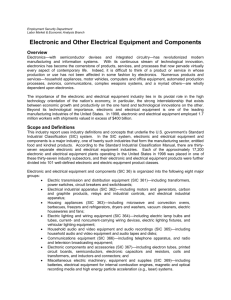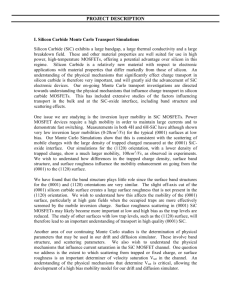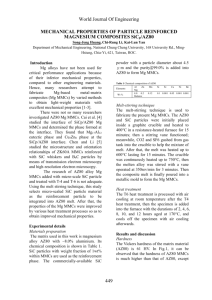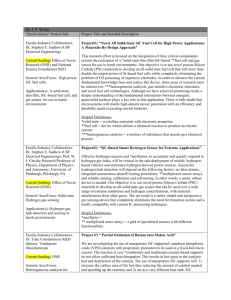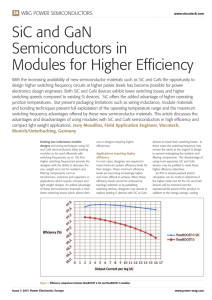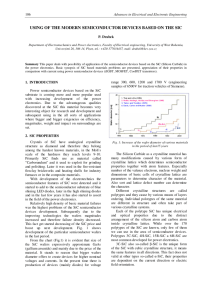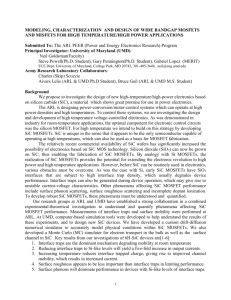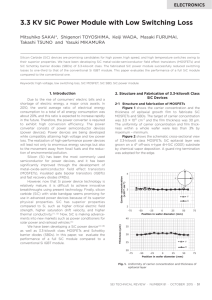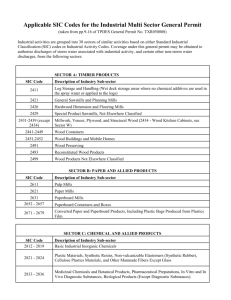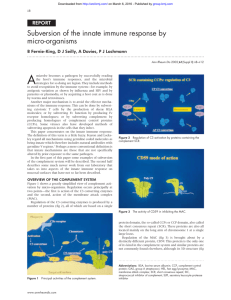Talbor Applications in Electronics
advertisement
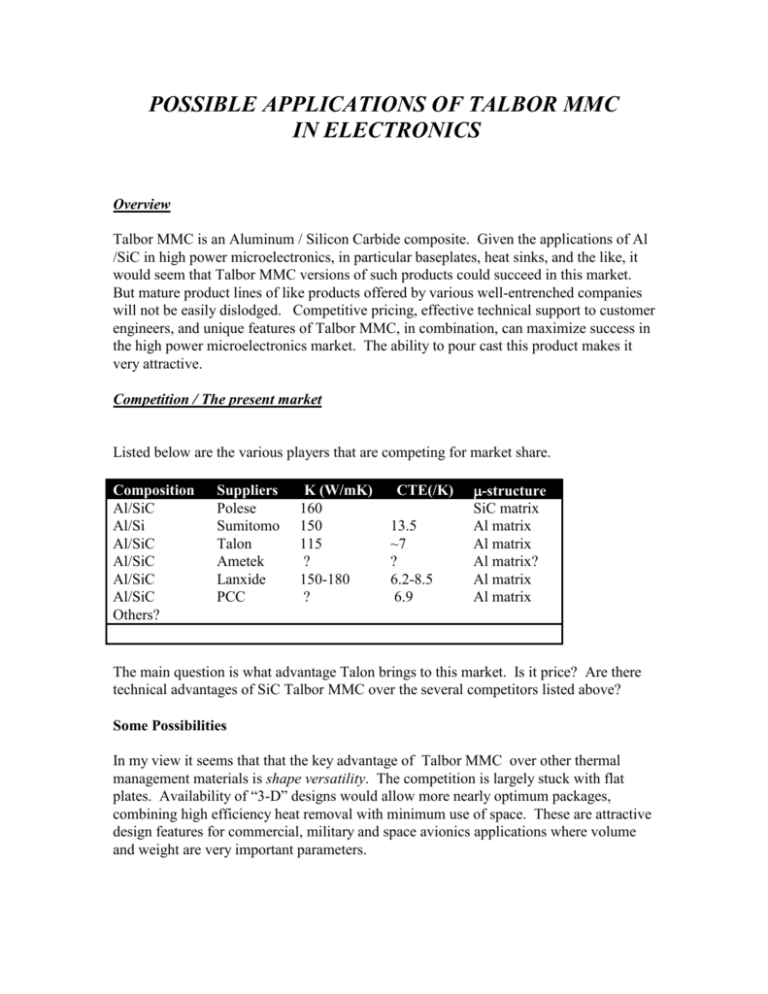
POSSIBLE APPLICATIONS OF TALBOR MMC IN ELECTRONICS Overview Talbor MMC is an Aluminum / Silicon Carbide composite. Given the applications of Al /SiC in high power microelectronics, in particular baseplates, heat sinks, and the like, it would seem that Talbor MMC versions of such products could succeed in this market. But mature product lines of like products offered by various well-entrenched companies will not be easily dislodged. Competitive pricing, effective technical support to customer engineers, and unique features of Talbor MMC, in combination, can maximize success in the high power microelectronics market. The ability to pour cast this product makes it very attractive. Competition / The present market Listed below are the various players that are competing for market share. Composition Al/SiC Al/Si Al/SiC Al/SiC Al/SiC Al/SiC Others? Suppliers Polese Sumitomo Talon Ametek Lanxide PCC K (W/mK) 160 150 115 ? 150-180 ? CTE(/K) 13.5 ~7 ? 6.2-8.5 6.9 -structure SiC matrix Al matrix Al matrix Al matrix? Al matrix Al matrix The main question is what advantage Talon brings to this market. Is it price? Are there technical advantages of SiC Talbor MMC over the several competitors listed above? Some Possibilities In my view it seems that that the key advantage of Talbor MMC over other thermal management materials is shape versatility. The competition is largely stuck with flat plates. Availability of “3-D” designs would allow more nearly optimum packages, combining high efficiency heat removal with minimum use of space. These are attractive design features for commercial, military and space avionics applications where volume and weight are very important parameters. Also, we have been told that there are now available power module substrates that combine an Al/SiC base, AlN ceramic substrate, and photo-etchable 10-mil thick aluminum top layer. These “blanks” can be pulled from stock, photoetched, and shipped with short turn around times when required.. The significance here is the AlN / Al combination replacing the more traditional AlN / Cu combination. Key to this approach is the Al-to-AlN bonding which derives from the wettability of AlN by molten aluminum. In the area of power module substrates (Cu-on-AlN-on-Cu-on-Al/SiC variety) we have conceived significant technical improvements over the copper-to-AlN brazing process initially developed while Norm Anderson was at Ceradyne (and still used by Alberox to whom the “Ceramic-to-Metal” operation was sold in late 1994). This would provide an immediate approach for producing copper metallized AlN substrates suitable for subsequent attachment to Talon Al/SiC base plates. In addition, the blank copper-on-AlN substrates could be marketed to photo-etching shops for stocking. Robin A. Carden sold hybrid electronic circuits and thermal packages to many corporations while working at Ceradyne for 7 years. Effective marketing is essential to the successful introduction of a new product line. As we did at Ceradyne and Alberox, well-placed technical articles in trade journals and presence at trade shows, e.g., IMAPS (previously known as ISHM) among others.




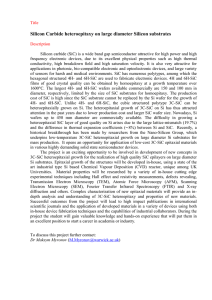
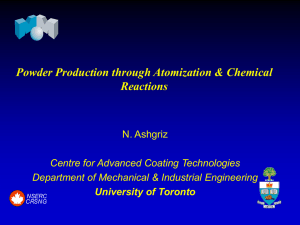
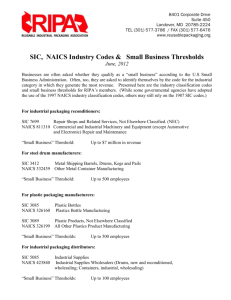
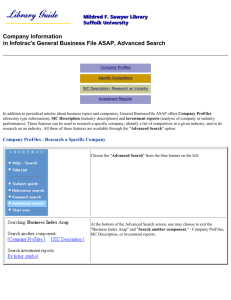

![[[1]]](http://s3.studylib.net/store/data/007888946_2-baffa76aac5bf2a2e3216decdb0cc650-300x300.png)
